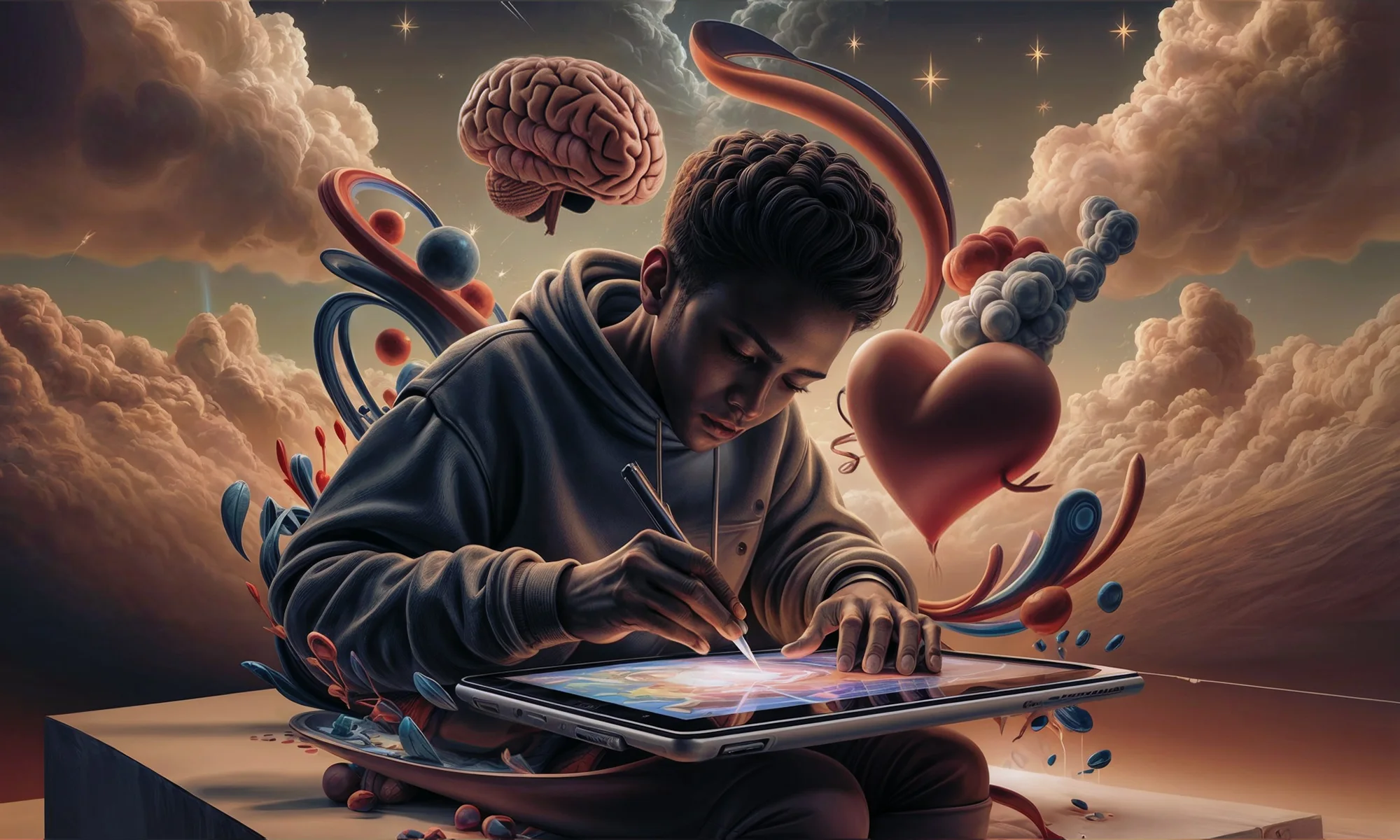Digital art is more than just a creative outlet; it can be a powerful tool for enhancing mental well-being. As someone deeply immersed in both graphic design and mental health, I’ve experienced firsthand the therapeutic benefits of creating art. In this post, We’ll explore how digital art can positively impact mental health and share some practical tips for incorporating art into your self-care routine.
The Therapeutic Benefits of Art

Art therapy has long been recognized for its ability to help individuals express emotions, reduce stress, and enhance mental clarity. Digital art, in particular, offers unique benefits:
- Stress Reduction: Engaging in creative activities can lower cortisol levels, the body’s primary stress hormone.
- Enhanced Focus: The immersive nature of digital art can improve concentration and mindfulness, helping individuals stay present and focused.
- Emotional Expression: Digital art allows for a wide range of expression, making it easier to convey complex emotions that might be difficult to articulate with words.
The Psychological Effects of Digital Art on Mental Health

Creating digital art is not just a form of expression; it also has profound psychological benefits. Engaging with digital media can stimulate the brain and promote positive mental health in several ways:
- Cognitive Engagement: Digital art requires concentration and decision-making, engaging the brain in a way that can enhance cognitive functions. This mental engagement can help improve problem-solving skills and creativity.
- Emotional Regulation: Art provides an outlet for emotions. Creating digital art can help individuals process feelings, manage anxiety, and express difficult emotions in a non-verbal way. This process of externalizing emotions can lead to greater emotional clarity and understanding.
- Mindfulness and Flow: The act of creating can induce a state of flow, where individuals become fully immersed in their work. This state is often associated with mindfulness, which can reduce stress and anxiety, promote relaxation, and enhance overall well-being.
- Identity Exploration: Digital art can serve as a tool for self-discovery. By exploring different styles and subjects, individuals can gain insight into their values, beliefs, and feelings. This exploration can foster a stronger sense of identity and self-acceptance.
- Community Connection: Sharing digital art within communities, whether online or offline, can create connections with others who share similar interests. This sense of belonging can be incredibly beneficial for mental health, combating feelings of loneliness and isolation.
Incorporating digital art into your routine can offer valuable psychological benefits that contribute to better mental health. It encourages self-expression, emotional regulation, and community engagement, all of which are vital components of well-being.
My Personal Experience

Creating digital art has been a sanctuary for me during challenging times. One project that stands out was a digital painting series I created during a particularly stressful period. The process of selecting colors, experimenting with textures, and bringing my vision to life provided a much-needed escape and a sense of accomplishment.
Tips for Using Art as Therapy

Incorporating digital art into your self-care routine doesn’t require a lot of time or expensive tools. Here are some tips to get started:
- Start Simple: Begin with basic digital drawing apps or software. Focus on simple projects that don’t require extensive skills.
- Set a Routine: Dedicate a specific time each day or week for your art practice. Consistency helps build a habit.
- Create a Calming Workspace: Set up a quiet, comfortable space free from distractions. Good lighting and a comfortable chair can make a big difference.
- Experiment with Techniques: Don’t be afraid to try new styles and techniques. The goal is to enjoy the process, not to create a masterpiece.
Examples of Therapeutic Art Projects

Here are a few project ideas that can be particularly therapeutic:
- Mandala Creation: Designing mandalas can be a meditative and calming activity.
- Digital Collage: Combine different elements to create a cohesive piece. This can be a great way to explore different themes and emotions.
- Abstract Art: Experiment with colors, shapes, and textures to create abstract pieces that express your inner state.
- Nature Scenes: Drawing or painting scenes from nature can be incredibly soothing and grounding.


Hello, i think that i saw you visited my weblog so i came to ?eturn the favor�I’m trying to find things to improve my web site!I suppose its ok to use some of your ideas!!
Thank you I have just been searching for information approximately this topic for a while and yours is the best I have found out so far However what in regards to the bottom line Are you certain concerning the supply